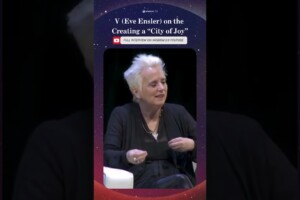
The easiest way to relax is to focus on the quality of your breath. But, for many people, this is easier said than done. Here are some techniques to relax your body and mind:
Guided imagery
Guided imagery is a form of self-hypnosis. It works by implanting ideas into the subconscious mind and retrieving those ideas later. It is a valuable tool for reducing stress, anxiety, and tension. Here are some general guidelines for guided imagery:
To begin with, ‘guided imagery’ should be pleasant and relaxing. Many people imagine a wise ‘guide’ who can answer their questions and help them relax. This wise ‘guide’ represents the subconscious mind. Alternatively, guided imagery can be a powerful way to help people deal with anxiety, depression, or stress. There are many different benefits of guided imagery. It has the potential to reduce pain and increase mobility.
The process of guided imagery can be practiced alone or with the help of a professional. Once you’re deeply relaxed, close your eyes and visualize a beautiful scene. You can choose to picture a scene from the natural world or a dense forest. As long as you can imagine the scene clearly, you’re likely to be able to feel relaxed and stress-free. In addition, guided imagery can be used to manage pain and promote healing.
As an added benefit of guided imagery, the technique is easy to use. You can focus on a certain object, sound, or peaceful scenario. By focusing on such things, you’re more likely to relax. Your body responds to what you think, and guided imagery helps you relax and achieve a peaceful state of mind. During a stressful situation, your heart rate and blood pressure increase, and you may even experience a jittery feeling.
Breathing exercises
Learning to use breathing exercises for relaxation can reduce your anxiety and relieve your stress. These exercises are simple and can help you fall asleep. You can try them right away if you don’t have time to meditate. Try them before you react to stressful situations or whenever you’re feeling overwhelmed. You can also use them during your day. If you find them difficult, try experimenting with different techniques. Just remember to check with your doctor or respiratory therapist if you have any health concerns. You can also try a free trial of Calm to see if it’s right for you.
One of the easiest breathing exercises is to match your breaths with your length of the exhale. You can practice matching your breath length with your exhale to achieve the right amount of stress relief. Begin with a full inhalation and then exhale one-third of your breath. Repeat the breathing exercise several times a day for up to 10 minutes. Sage also recommends that you do eight mini meditations every day to banish stress.
Breathing is essential to our survival. It delivers oxygen to our blood cells and helps us to heal from various ailments. When we breathe, carbon dioxide is also released from the body and is a waste product. When our breathing is not done properly, it can disrupt this exchange and cause us to suffer from anxiety and stress. In this case, breathing exercises for relaxation can be a great way to deal with your anxiety and improve your life in general.
Focusing on the quality of each breath
Slow breathing has been shown to have an indirect effect on the brain. A study by Anselm Doll and colleagues revealed that slow breathing decreases activity in the amygdala, the part of the brain that regulates emotion. Moreover, focused breathing has the ability to improve relaxation. Here are the benefits of slow breathing. The brain’s parasympathetic system is involved in relaxation.
Visualization
The key to relaxing with visualization is to picture the outcome you wish to achieve before it actually happens. This technique can be applied to a wide variety of situations, from speaking in front of large audiences to sports. The technique became popular among Russian athletes after the 1984 Olympics. By imagining the positive outcome of a task, you will be able to focus on the process rather than the end result. But how do you actually do this?
The power of imagination lies within our ability to create the state of mind we want. Visualization helps you create your ideal work environment, with supportive colleagues. Visualization begins with your desired outcome and plans a way to get there. Imagine the changes you want to make in your life, and then act accordingly. Visualization is a very effective method for relieving stress, and you don’t need to be a psychology major to use it.
Visualization is an active process that requires a lot of practice to reap the benefits of this technique. Practice it at least once a day, and you will find it easy. You may even want to set a timer for yourself to make the process more manageable. It won’t be relaxing right away, but it will help you immensely in the long run. Once you’ve developed the habit of practicing visualization on a daily basis, you’ll find that it becomes second nature.
Body scan meditation
You can start your body scan meditation by lying down or sitting in a comfortable position. Inhale deeply and slowly while filling your chest and belly with air. Next, relax your shoulders and bring your attention back to your body scan. Repeat this process with each part of your body, and then take a final, deep breath to complete the process. Once you have finished, you can move on to another meditative practice.
To begin, start by scanning your body from head to toe. Start at the top of your head and work your way down through your arms, legs, and torso. Notice any points of tension, and breathe into them. Repeat this process as many times as necessary to experience the full benefits of this method. Practiced regularly, body scan meditation helps relieve tension and stress. Listed below are the key points to focus on during meditation.
Choose a quiet place for the meditation. Try a comfortable chair or lie down. Try to meditate for at least five minutes. A longer session may give you more insight into sensations, but shorter sessions are effective when you’re short on time. You can also focus on specific areas of the body to further your relaxation. There are many benefits to body scan meditation, and it’s a great way to start a mindfulness practice.
Mindfulness journaling
Mindfulness journaling is a great way to deal with difficult emotions and decompress from the day’s events. It is beneficial in a number of ways, including developing self-awareness and increasing emotional intelligence. These qualities are useful in building stronger relationships and managing feelings. Self-discipline is another key component of mindfulness journaling. By writing your thoughts and feelings down, you can foster self-confidence, develop organization skills, and improve communication skills.
Many benefits of mindfulness journaling include reducing anxiety and stress. It can even help you get a handle on your inner critic. National Certified Counselor Dennis Relojo-Howellis outlines three methods for beginners. The first is to start a journal. The second is to write your thoughts every day. Using a journal allows you to reflect on the things in your life and the events that brought you to that moment. It is important to know that the practice of journaling is a form of self-therapy and should not be a substitute for medical or psychological treatment.
The second benefit of journaling is the ability to heal your mind and body. The act of writing in a mindful journal reduces mental health problems and helps you gain appreciation for your surroundings. By learning to acknowledge your gratitude for what you have, you are able to reduce the risk of developing depression, anxiety, and other mental health issues. By practicing gratitude through journaling, you will be able to appreciate all of the good in your life. This is an extremely important skill to cultivate in a busy world.
Did you miss our previous article…
https://quietmeditations.com/how-to-use-meditation-to-manage-panic-attacks/





